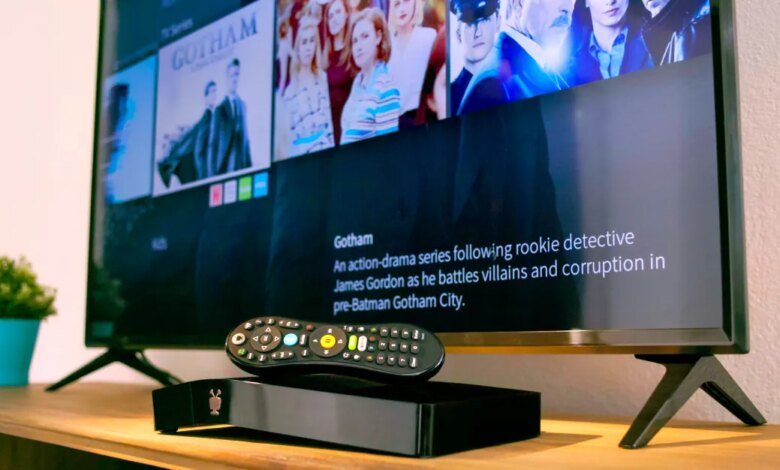TiVo won the court battles, but lost the TV war

In the 2000s, TiVo reached heights that few companies have achieved. Like Google and Xerox, its name has become a verb. People had to “TiVo” the new episode of Battlestar Galactica Or Game 4 of Red Sox vs. Cardinals, not “recorded.” Although it didn’t invent the digital video recorder, TiVo popularized it and many features that we’ll eventually take for granted, like the ability to pause or rewind live TV, and watch one program while recording another.
These features are covered in the infamous US Patent No. 6,233,389 – otherwise known as the Time Warp Patent. TiVo spent much of the 2000s and early 2000s defending its intellectual property through a series of high-profile lawsuits, most notably against EchoStar. This particular saga continued for the better part of a decade, with TiVo originally filing the suit in January of 2004 and the final $500 million settlement being awarded in April of 2011.
But TiVo spent most of its early years in court battles with major players in TV and digital video. Motorola, Time Warner Cable, AT&T, Dish Network, Cisco, and Verizon have found themselves on the receiving end of a patent infringement lawsuit from TiVo. TiVo emerged victorious in almost every one. The US Patent Office even agreed to re-examine the patent on two separate occasions and reasserted his claims.
If the company had focused on revenue streams outside the courtroom, it could have been at the forefront of launching smart TVs.
Licensing its technology became TiVo’s primary way of making money as it entered the 2000s. The problem was, at the time, the writing was on the wall. Netflix launched its streaming service in January 2007. Hulu entered beta later that year and launched publicly in March 2008. That year also saw the launch of the first Roku device and the earliest modern smart TV models, such as the Samsung PAVV Bordeaux TV 750.
Digital video recorders have become standard issue on most cable TV packages. The TiVo interface was certainly sleeker, and it had advanced features, like scheduling recordings remotely via TiVo Central Online or transferring them to a computer with TiVoToGo. But spending $200 or more on a separate DVR in 2008 (at least if you wanted high-resolution tuners), plus an additional subscription cost on top of your cable bill, was increasingly difficult when Time Warner gave you a good enough DVR.
Roku was offering easy-to-use streaming receivers at impulse buy prices — as low as $49.99 by 2011. Google pushed prices down even more with Chromecast in 2013. Smart TV operating systems are becoming increasingly capable. TiVo has been adding support for Netflix, Hulu, and other streaming services, but it seems like it’s been constantly catching up as it enters the new decade.
TiVo hardware has been in the doldrums. It was time wasting on features like the ability to order Domino’s from your TV. Its biggest money maker — a patent focused on tampering with broadcast television — was becoming increasingly outdated as cord-cutting grew in popularity.
According to nScreenMedia, traditional pay-TV subscriptions peaked in the United States in 2010 at about 103 million, or roughly 89 percent of households. In 2025, this number will fall to just 49.6 million, or 37.6% of households. The most popular streaming services are now easily outpacing linear pay TV, copying some of its moves by relying on live sports-centric content and other shows that draw eyeballs to now-unskippable ads. At the end of 2024, Netflix had 89.6 million subscribers and Disney Plus 56.8 million in the United States and Canada. (Companies advertise subscriptions by region only, not country.) As TiVo continued to fight companies like Google and Time Warner in court, its customer base was drying up.
TiVo was eventually purchased by Rovi, a company whose primary business is hoarding patents and licensing them to other companies or suing companies to force them to license their technology. This, unfortunately, was TiVo’s future fate. When it was purchased by technology licensing company Xperi in 2020, the press release announcing the merger didn’t tout its best-in-class hardware or innovative set-top box software. Instead, it boasted of having “one of the largest and most diverse intellectual property licensing platforms in the industry.”
After its merger with Xperi, TiVo did not launch another set-top box. Its last model, the TiVo Edge, was released in 2019. This month, the company confirmed that it quietly sold the last of its inventory on September 30 and will exit the hardware business.
TiVo says it plans to focus on its emerging smart TV operating system — a move that may be 15 years too late. Perhaps if the company had focused on revenue streams outside the courtroom, it would have been at the forefront of launching smart TVs. Maybe it could have developed its own streaming device that was more than just a lazy (and late) redesign of Android TV. TiVo’s user interface and popular Peanuts remote were loved. Her brand was a household name. But instead of building a platform to power the next generation of TVs, it seemed focused on milking every dollar from companies that were clearly headed toward obsolescence.
Don’t miss more hot News like this! Click here to discover the latest in AI news!
2025-10-18 16:00:00




